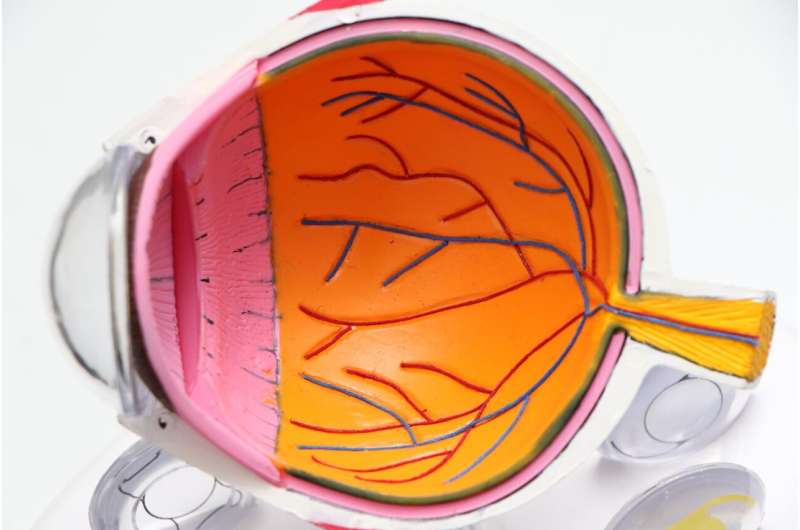This article has been reviewed according to Science X's editorial process and policies. Editors have highlighted the following attributes while ensuring the content's credibility:
fact-checked
peer-reviewed publication
trusted source
proofread
Researchers develop novel biodegradable nanoprobe to detect diabetic retinopathy in its early stages

In a paper published by the research team of Ali Hafezi-Moghadam, MD, Ph.D. at the Brigham and Women's Hospital (BWH), a founding member of Mass General Brigham, authors introduced a biodegradable fluorescent nanoprobe to detect diabetic retinopathy (DR) in its early molecular stage.
Retinopathy is a prevalent complication of diabetes and a cause of severe vision loss. Current clinical diagnosis relies on detection of irreversible structural damages. Early subclinical diagnosis and intervention could drastically improve prognosis for the rapidly growing population of individuals with diabetes. The findings are published in the journal Biosensors and Bioelectronics.
The researchers had previously established fluorescent nanoprobes for molecular imaging and showed higher expression of the molecule VEGFR-2 in the eye during diabetes.
Upon circulating in the bloodstream, the nanoprobes bind to VEGFR-2, expressed in the retinal microvessels. Visualizations of the nanoprobe interactions in live retinal microscopy reveal incipient DR in its earliest stage.
The current work facilitates translation by making the nanoprobe both biodegradable and bright enough for in vivo detection. Fluorophores in close proximity self-quench, so to overcome this challenge a fluorophore with bulky side arms that keep the neighboring molecules at bay was synthesized and loaded into the nanoprobe. The outcome was a biodegradable nanoprobe with sufficient brightness capable of distinguishing early DR in mice.
"Early diagnosis of diabetic complications is an unmet medical need. We have overcome a key hurdle toward clinical translation of our molecular imaging approach," said Hafezi-Moghadam, associate professor of Radiology at Harvard Medical School and director of the Molecular Biomarkers Nano-Imaging Laboratory (MBNI) at BWH. "Our new results set the stage for clinical testing of this tool in an effort to one day prevent vision loss in individuals with diabetes."
More information: Yuanlin Zhang et al, VEGFR-2 adhesive nanoprobes reveal early diabetic retinopathy in vivo, Biosensors and Bioelectronics (2023). DOI: 10.1016/j.bios.2023.115476
Journal information: Biosensors and Bioelectronics
Provided by Brigham and Women's Hospital





















